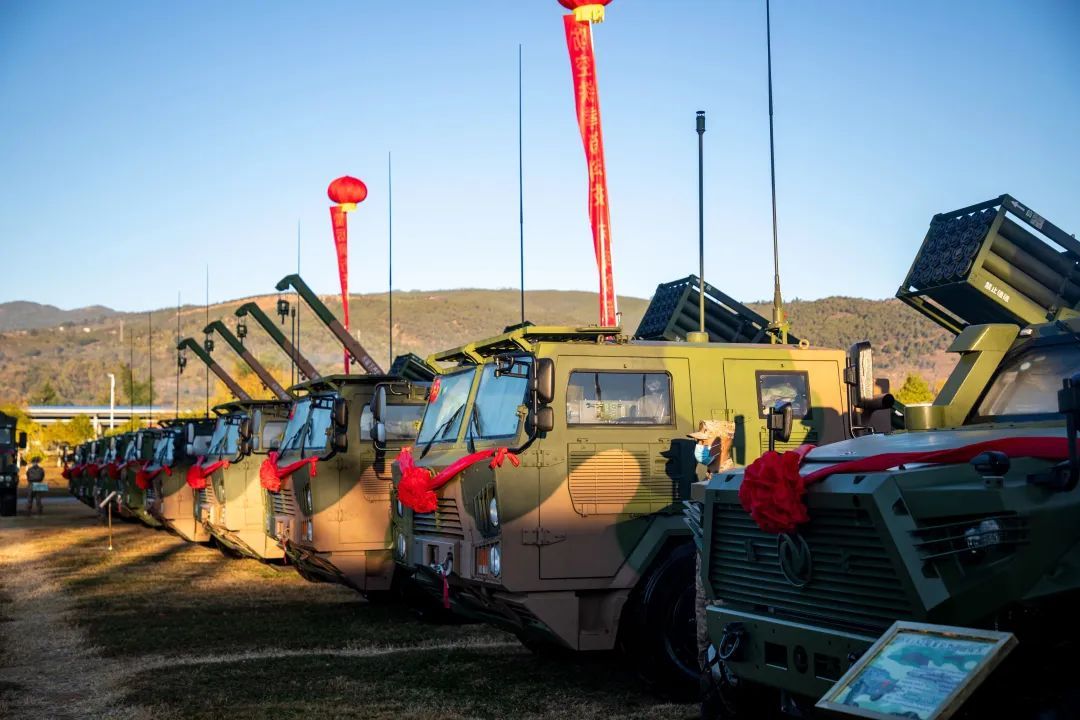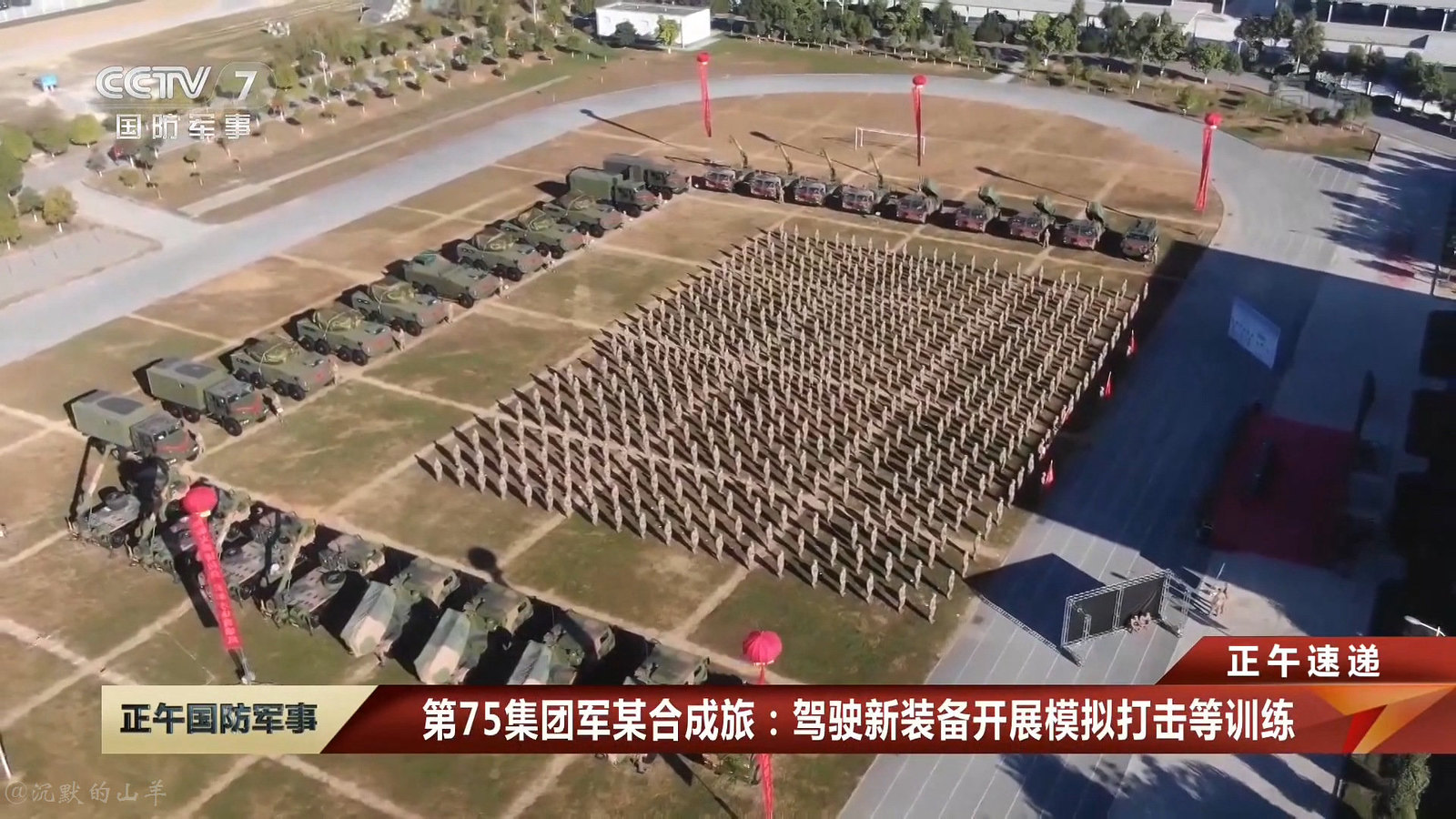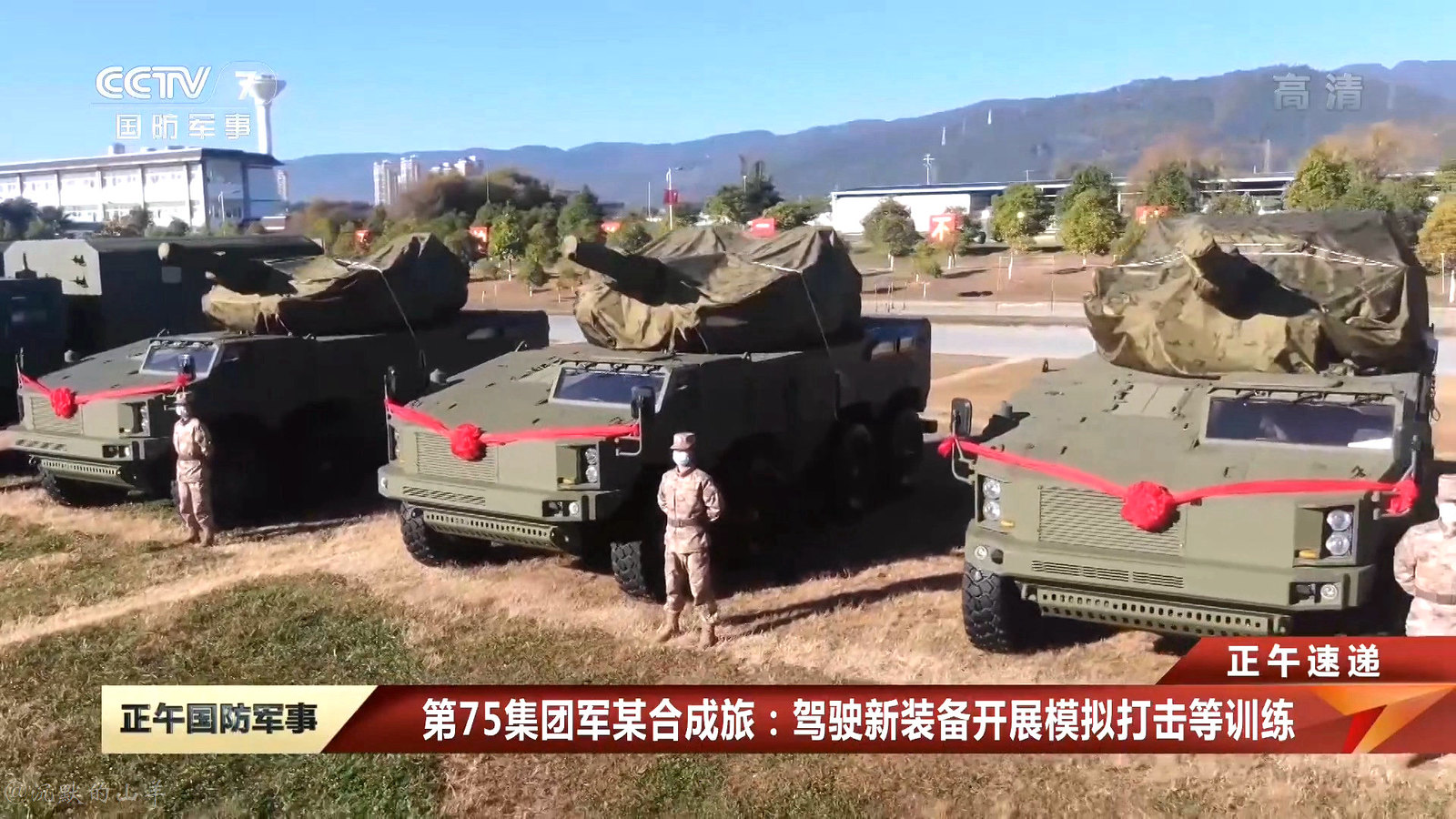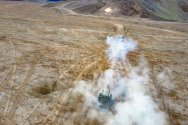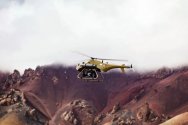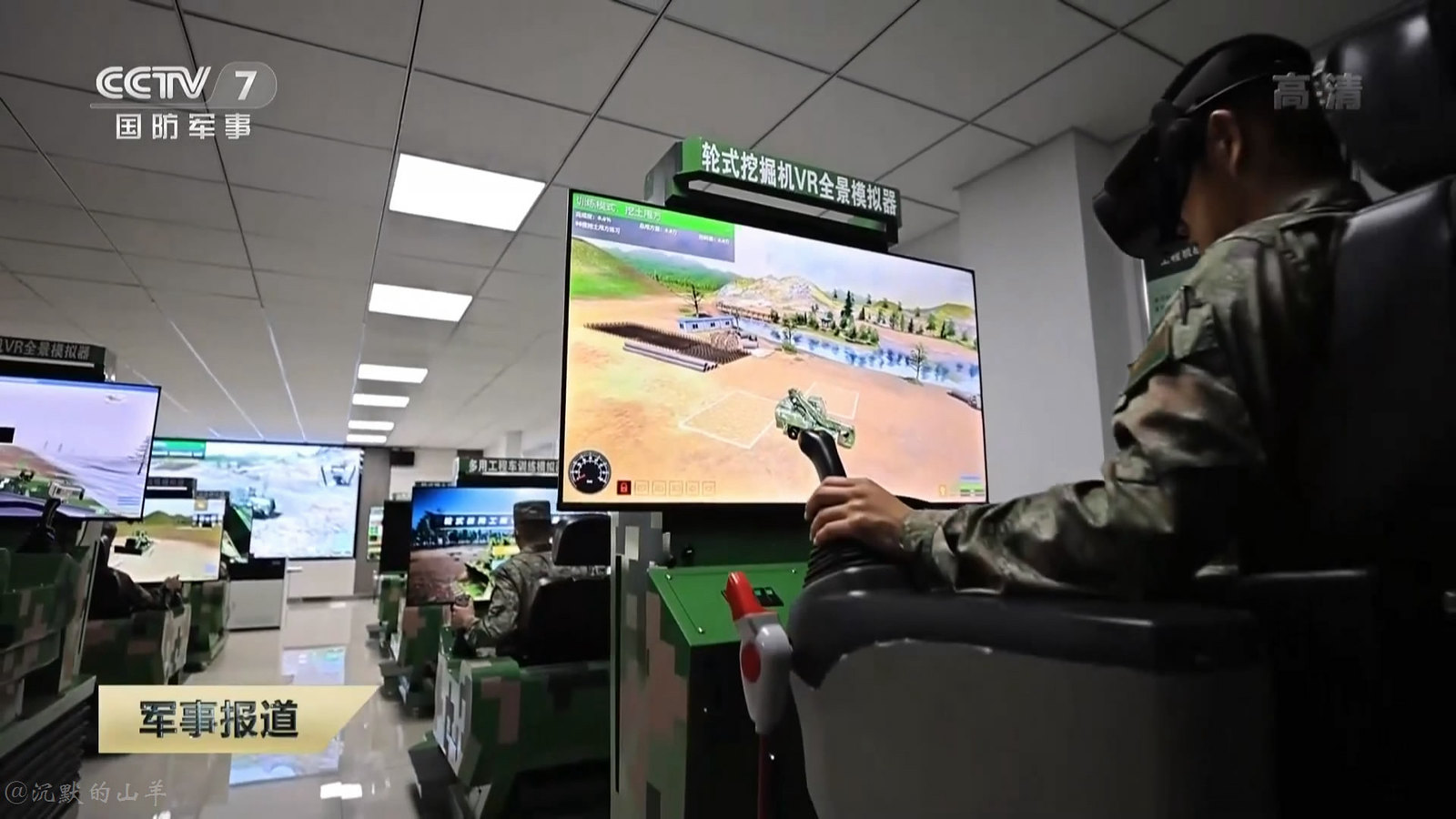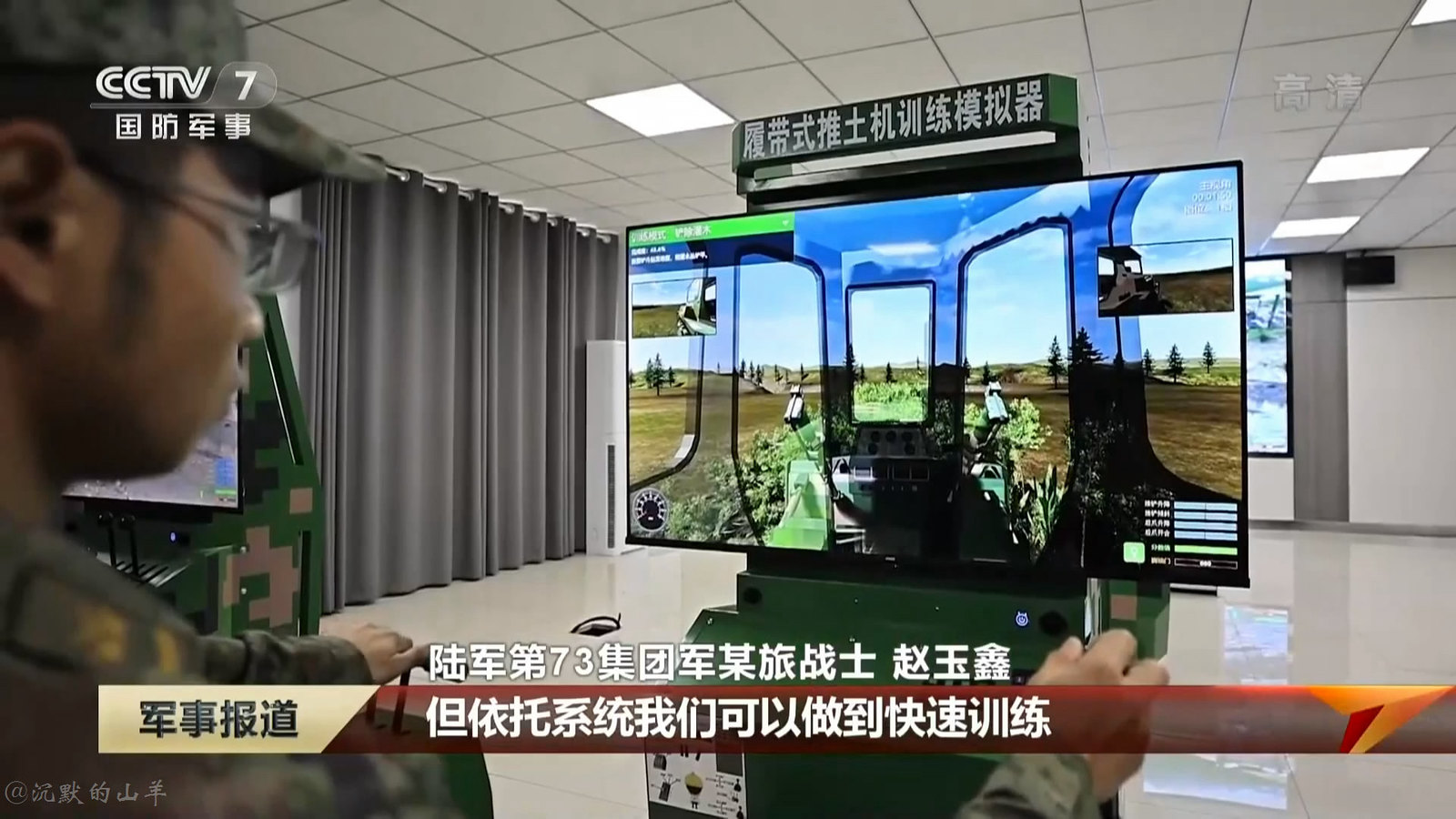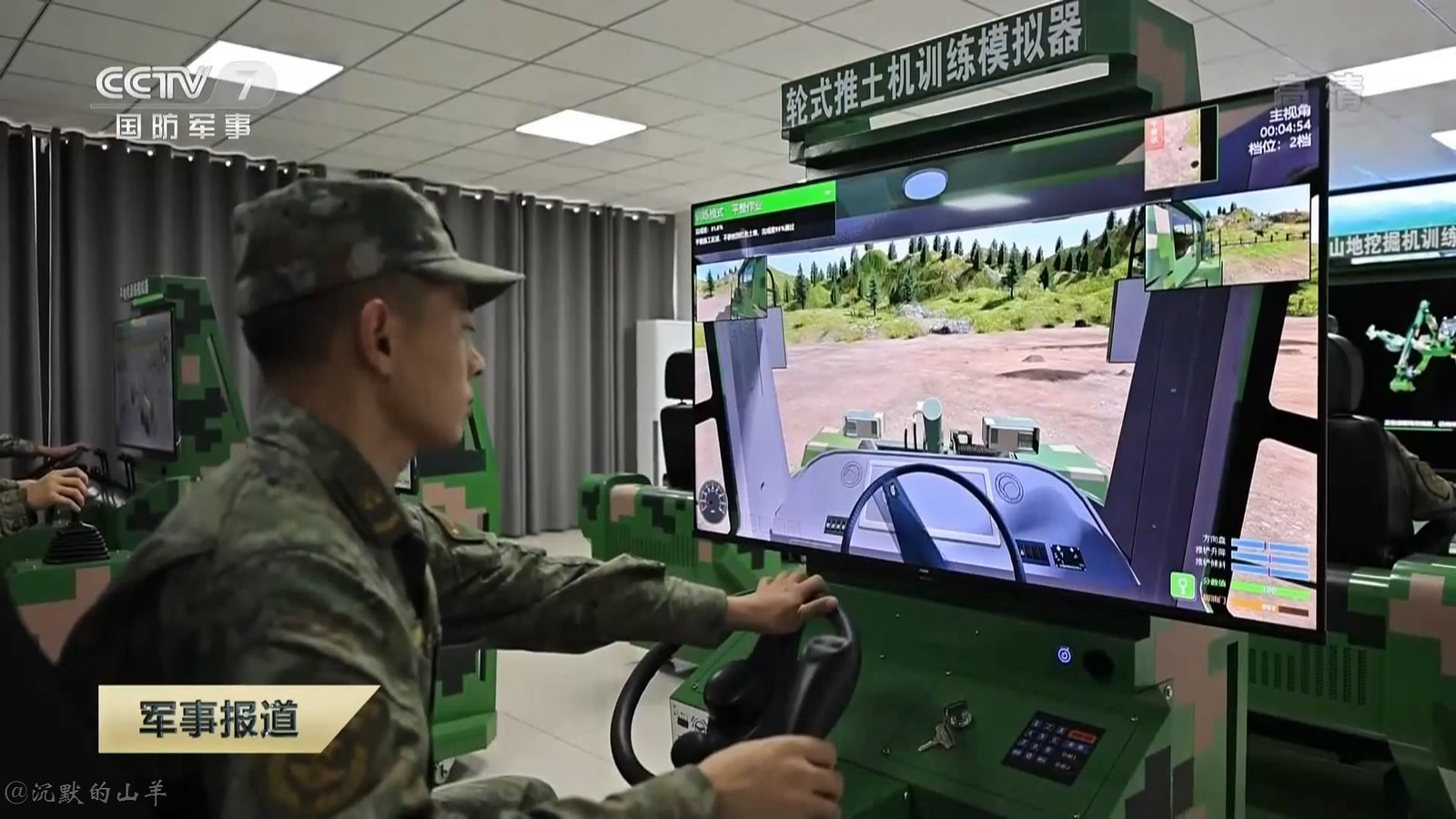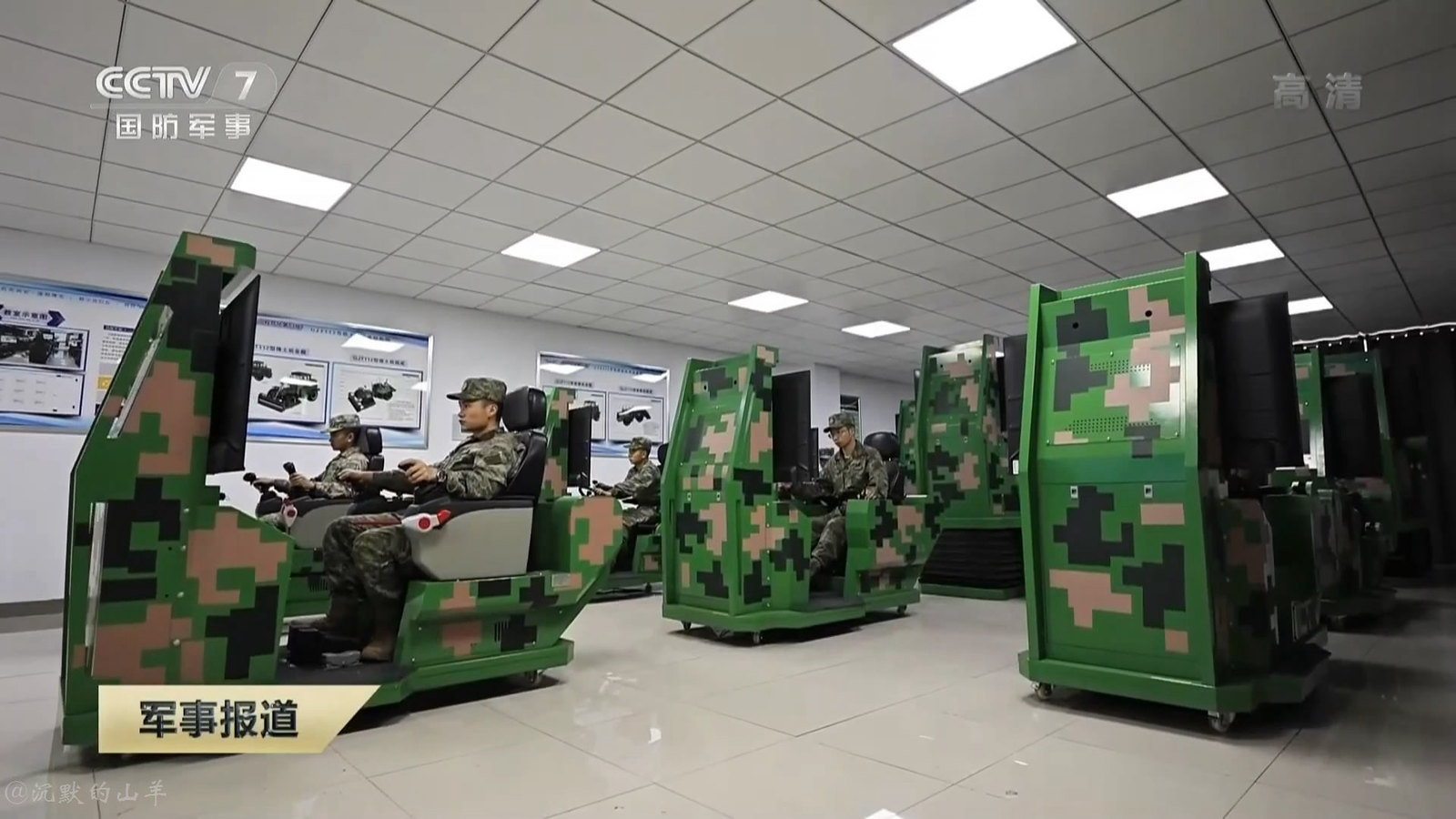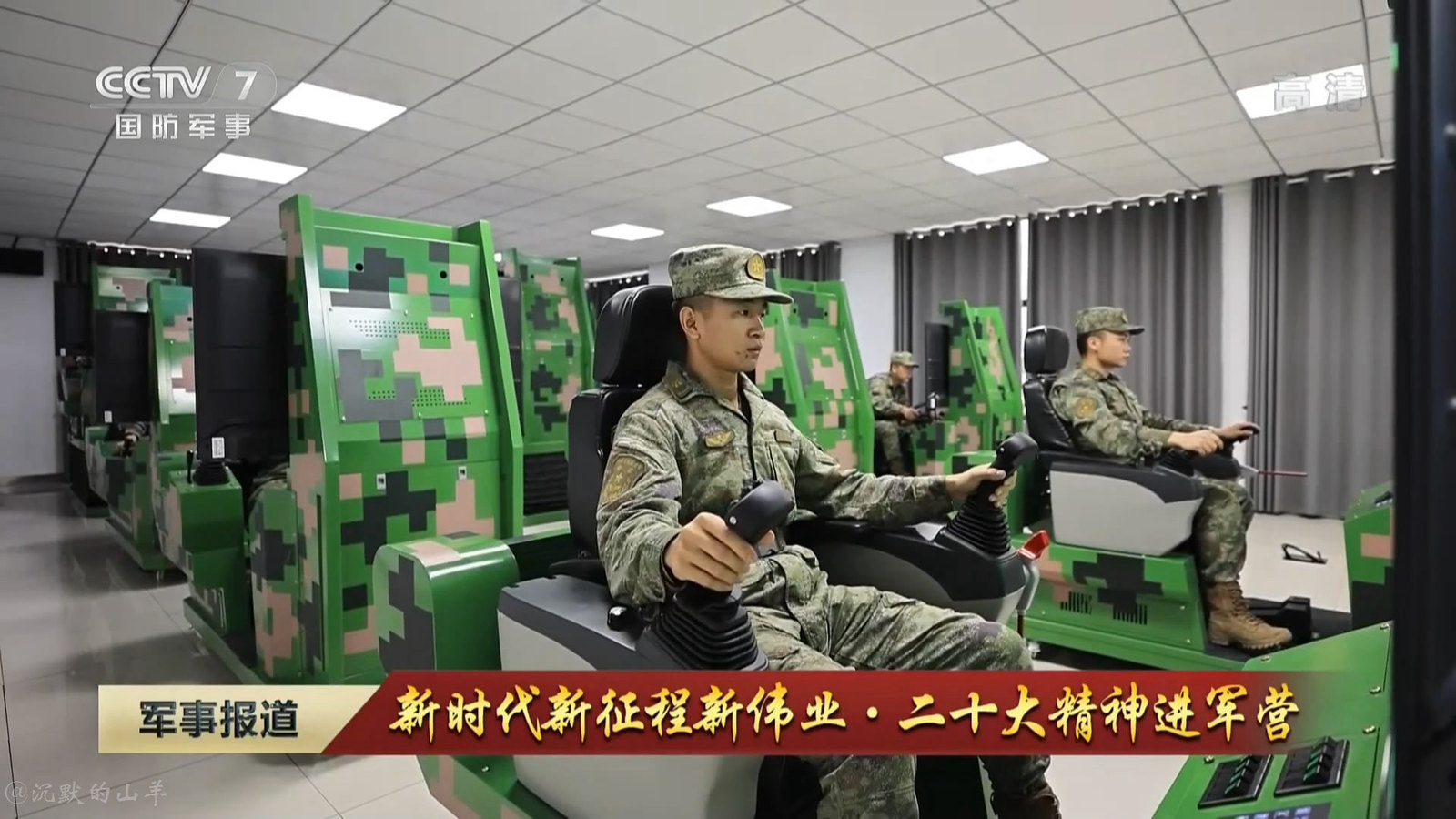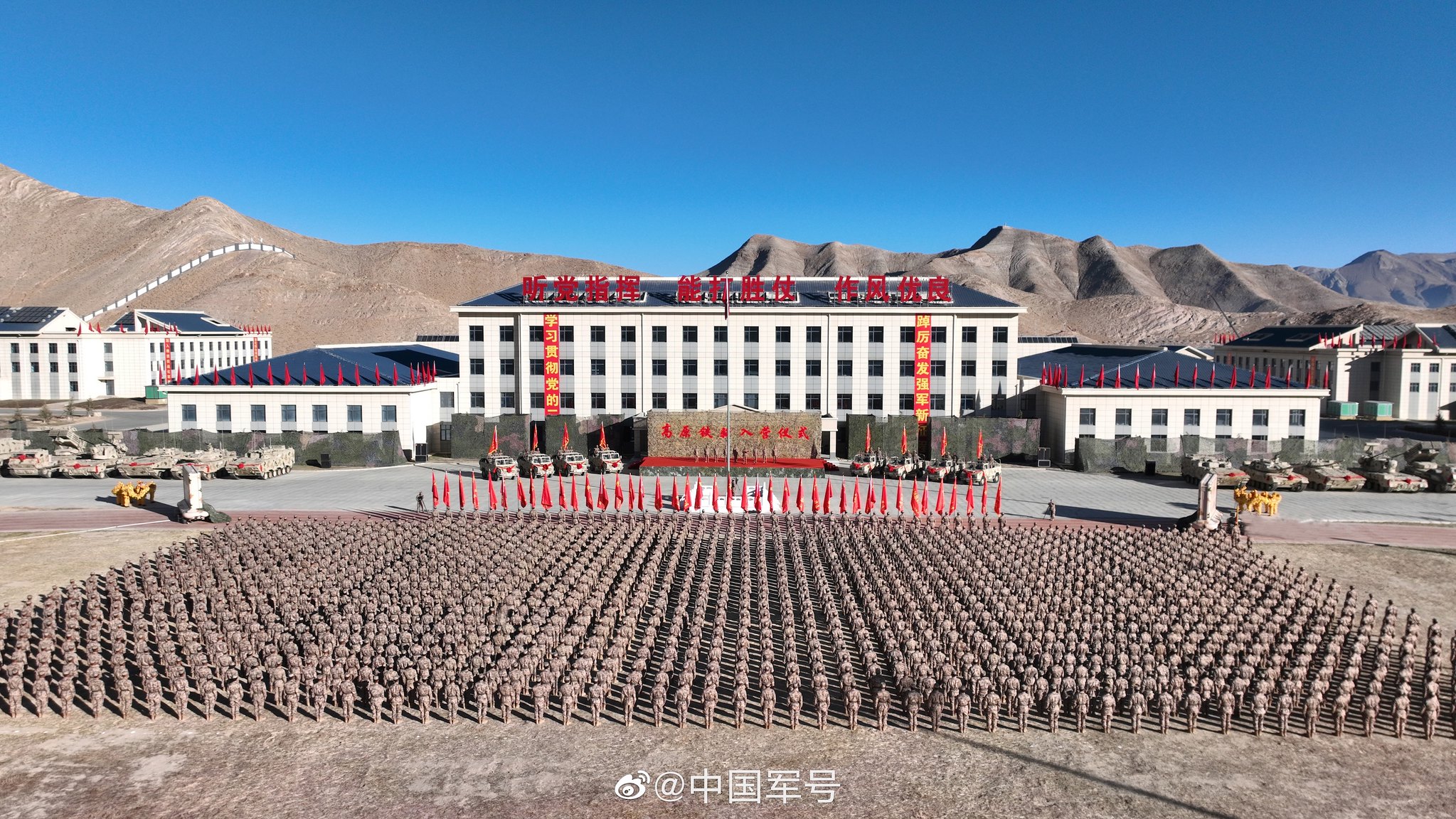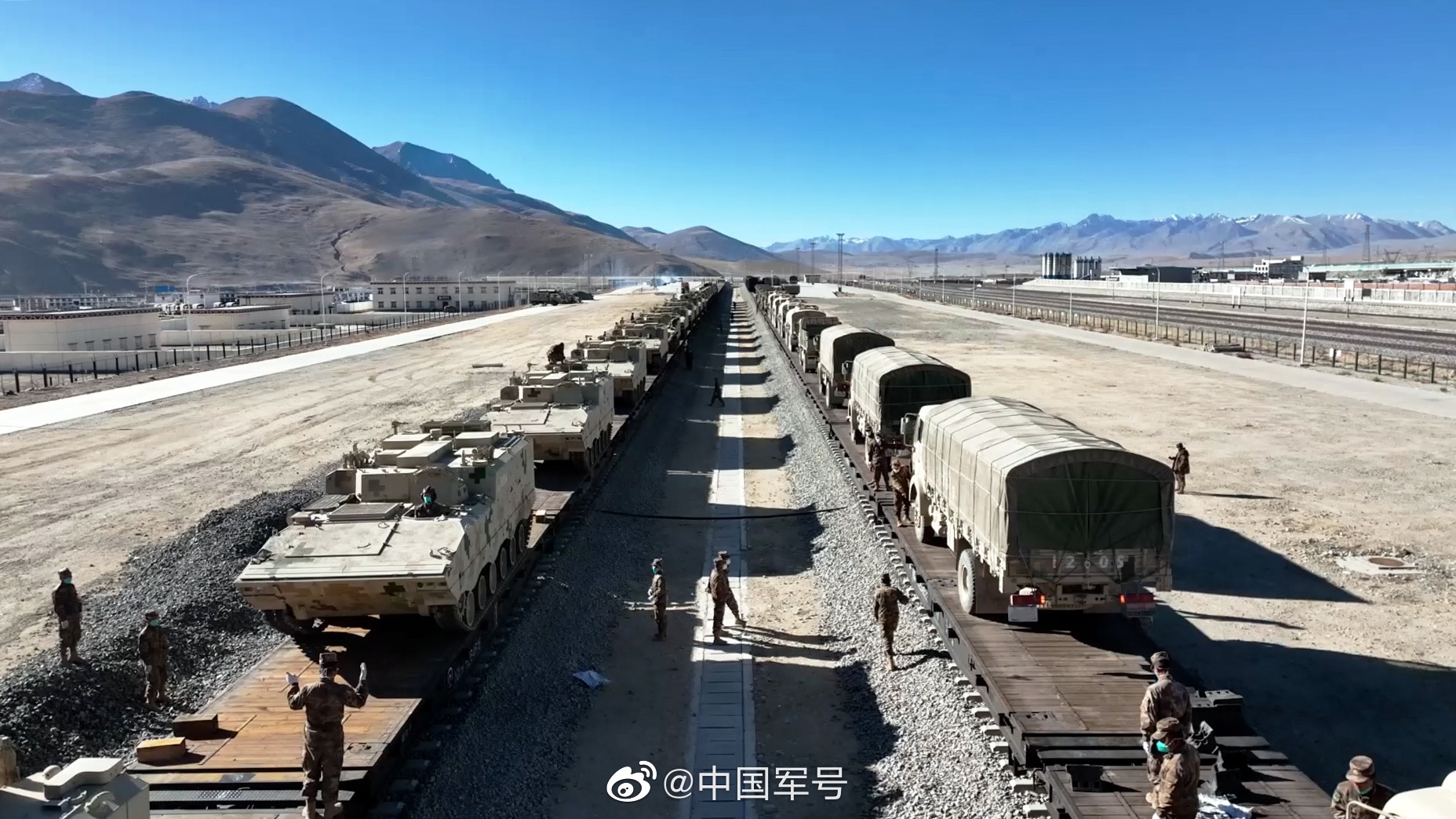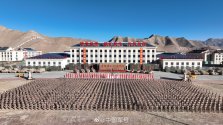You are using an out of date browser. It may not display this or other websites correctly.
You should upgrade or use an alternative browser.
You should upgrade or use an alternative browser.
PLA Ground Forces news, pics and videos
- Thread starter Jeff Head
- Start date
Straight from the PLA themselves:
SourceEditorLin Congyi Time2022-12-06 09:51:32
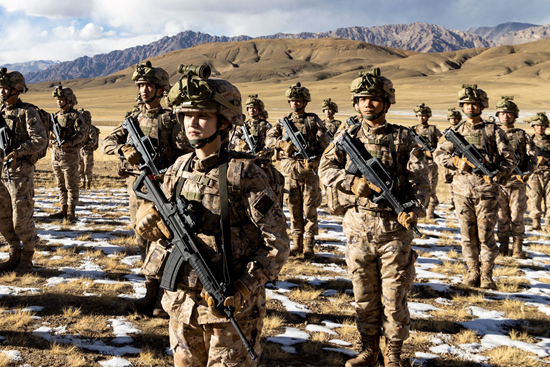
Armed soldiers assigned to a border defense company under the PLA Xinjiang Military Command stand in formation at a recent fitting ceremony of the new-type equipment. (Photo by Xiang Xudong)
On an early winter morning, the temperature on the Karakoram Plateau at about 4,500 meters above sea level dropped to minus 12 degrees Celsius. A sudden whistle broke the silence of a training ground on the plateau, where service members of an artillery command company of a regiment under the PLA Xinjiang Military Command equipped with a new type of integrated individual system began to maneuver quickly towards the designated area more than 10 kilometers away.
Recently, the regiment has been equipped with the new integrated individual system, which includes new-type helmet, multi-function night vision goggles, portable computer, individual load carrier, assault rucksack and others. With a variety of equipment included, the system can help service members adapt to different regions and environments and meet the needs of diversified military tasks.
"Compared with the previous load carrier, the new system has many advanced features. It is more convenient to carry with and provides better protection. Integrated with informatization and intelligence capabilities, the system is a more battle-oriented device. It allows the commander to know about the dynamic of each individual and have a comprehensive picture of the mission," said Wu Shengnian, commander of the company. The new integrated individual system has improved the previous tactical vest and assault rucksack, added with a passive identification card, water purification system, oxygen generation system and accessories for other functions. The system therefore can better meet the needs of individual soldier to carry out diversified tasks.
When carrying out drills on the extremely cold plateau, lack of oxygen and water is the major difficulty faced by the service members. "The oxygen generation system and water purification system of the new integrated individual system have effectively solved the difficulty," Luo Qiang, head of the radar station, introduced delightedly.
The Karakoram Plateau is a place where oxygen concentration is half of that on the plain and wild wind and sandstorm strike frequently. Training under such environment is a serious challenge for every service member. Fortunately, with the distribution of the new integrated individual system, they can take in oxygen at any time on the oxygen-deficient plateau and move more easily, even with nearly 30 kg materials loaded.
During the daily training drill in late November, after marching for more than 10 kilometers, the company conducted a tactical drill in the predetermined area. After using UAVs to carry out reconnaissance, they separated into several groups to encircle the mock enemy and successfully subdued all targets under close cooperation among various squads.
During the lunch break, Wu Shengnian drank warm water from a multipurpose kettle. As he introduced, the newly distributed multipurpose vacuum kettle is made of pure titanium material and uses electricity to keep water warm. Thanks to the new kettle, they can drink warm water anytime and anywhere, despite the extremely cold conditions.
After a short break, they maneuvered a long distance with heavy load to attack another group of mock enemies. On the way, they had to deal with all kinds of special situations. Before treating the simulated wounded member, Private First Class Ren Hang, a medical corpsman of the company, quickly took off the tactical vest and assault backpack off the "wounded" by simply pulling a rope. After that, he carried out timely battlefield rescue with a first-aid kit.
When encountering a small group of "enemies" in the drill, Luo Qiang quickly located and reported their position, and gave orders to properly deal with the situation. All these were done on his newly-distributed portable individual computer.
By the end of the routine daily training drill, the service members have had a better understanding of the performance and application of the newly distributed system. According to Wu Shengnian, commander of the company, the company has worked out a new equipment training plan after the distribution of the system, took the initiative to communicate with the manufacturer many times, explored the operational performance parameters of the new system in live-fire training, and adjusted the matching components in line with the practical task, task type and combat position. Obviously, the plan has effectively improved the operational efficiency and combat capability of the border defense troops.
SourceEditorChen Zhuo Time2022-12-07 18:26:52
By Niu Weimeng, Zhang Linghui and Li Yuewen
Yang Xiaopin, a technician assigned to a UAV company of a brigade under the PLA 73rd Group Army, recently completed an actual flight mission in strong wind with a new type of UAV, and obtained important flight data.
"The new UAV can fly out at any time, thanks to the appropriate site and logistic support provided by the air force station," Yang explained. "Now we have finished the verification of the new equipment’s flight parameters in short time."
In the past, it was not so easy for the army UAV Company to organize actual flight training. Yang introduced that after being transferred into the army brigade during the military reform, the UAV Company has lost the access to appropriate training ground. It became very difficult to carry out actual drone flight, thus causing great difficulty in obtaining data and following data verification.
"The site in need looks like a small airport, so to speak, covering an area of nearly 10,000 square meters with smooth road surface and visible view. However, it is really hard to achieve such conditions in the camp," said the company commander Jiang Kun.
At the beginning of 2022, the superior unit organized multi-level joint reconnaissance exercises involving various regions and combined arms. The brigade took the opportunity to report the difficulties faced by the UAV reconnaissance forces and their solutions, which got highly valued. In September, the company was allowed into an air force station for drone training.
From then on, the UAVs could be parked without disassembly and assembly, which reduced the dispatching time and equipment loss. Professional facilities and equipment were of great convenience to supporting UAV maintenance. Dedicated runways and training ground served to meet almost all needs in training. "You may feel like a bird freely flying across the sky," said the platoon leader Xiang Guodong excitedly.
"I hope this kind of training can become normal," said almost every soldier of the UAV Company.
A day of border defense company practicing with new integrated individual system
SourceEditorLin Congyi Time2022-12-06 09:51:32

Armed soldiers assigned to a border defense company under the PLA Xinjiang Military Command stand in formation at a recent fitting ceremony of the new-type equipment. (Photo by Xiang Xudong)
On an early winter morning, the temperature on the Karakoram Plateau at about 4,500 meters above sea level dropped to minus 12 degrees Celsius. A sudden whistle broke the silence of a training ground on the plateau, where service members of an artillery command company of a regiment under the PLA Xinjiang Military Command equipped with a new type of integrated individual system began to maneuver quickly towards the designated area more than 10 kilometers away.
Recently, the regiment has been equipped with the new integrated individual system, which includes new-type helmet, multi-function night vision goggles, portable computer, individual load carrier, assault rucksack and others. With a variety of equipment included, the system can help service members adapt to different regions and environments and meet the needs of diversified military tasks.
"Compared with the previous load carrier, the new system has many advanced features. It is more convenient to carry with and provides better protection. Integrated with informatization and intelligence capabilities, the system is a more battle-oriented device. It allows the commander to know about the dynamic of each individual and have a comprehensive picture of the mission," said Wu Shengnian, commander of the company. The new integrated individual system has improved the previous tactical vest and assault rucksack, added with a passive identification card, water purification system, oxygen generation system and accessories for other functions. The system therefore can better meet the needs of individual soldier to carry out diversified tasks.
When carrying out drills on the extremely cold plateau, lack of oxygen and water is the major difficulty faced by the service members. "The oxygen generation system and water purification system of the new integrated individual system have effectively solved the difficulty," Luo Qiang, head of the radar station, introduced delightedly.
The Karakoram Plateau is a place where oxygen concentration is half of that on the plain and wild wind and sandstorm strike frequently. Training under such environment is a serious challenge for every service member. Fortunately, with the distribution of the new integrated individual system, they can take in oxygen at any time on the oxygen-deficient plateau and move more easily, even with nearly 30 kg materials loaded.
During the daily training drill in late November, after marching for more than 10 kilometers, the company conducted a tactical drill in the predetermined area. After using UAVs to carry out reconnaissance, they separated into several groups to encircle the mock enemy and successfully subdued all targets under close cooperation among various squads.
During the lunch break, Wu Shengnian drank warm water from a multipurpose kettle. As he introduced, the newly distributed multipurpose vacuum kettle is made of pure titanium material and uses electricity to keep water warm. Thanks to the new kettle, they can drink warm water anytime and anywhere, despite the extremely cold conditions.
After a short break, they maneuvered a long distance with heavy load to attack another group of mock enemies. On the way, they had to deal with all kinds of special situations. Before treating the simulated wounded member, Private First Class Ren Hang, a medical corpsman of the company, quickly took off the tactical vest and assault backpack off the "wounded" by simply pulling a rope. After that, he carried out timely battlefield rescue with a first-aid kit.
When encountering a small group of "enemies" in the drill, Luo Qiang quickly located and reported their position, and gave orders to properly deal with the situation. All these were done on his newly-distributed portable individual computer.
By the end of the routine daily training drill, the service members have had a better understanding of the performance and application of the newly distributed system. According to Wu Shengnian, commander of the company, the company has worked out a new equipment training plan after the distribution of the system, took the initiative to communicate with the manufacturer many times, explored the operational performance parameters of the new system in live-fire training, and adjusted the matching components in line with the practical task, task type and combat position. Obviously, the plan has effectively improved the operational efficiency and combat capability of the border defense troops.
Army drones take off from Air Force station
SourceEditorChen Zhuo Time2022-12-07 18:26:52
By Niu Weimeng, Zhang Linghui and Li Yuewen
Yang Xiaopin, a technician assigned to a UAV company of a brigade under the PLA 73rd Group Army, recently completed an actual flight mission in strong wind with a new type of UAV, and obtained important flight data.
"The new UAV can fly out at any time, thanks to the appropriate site and logistic support provided by the air force station," Yang explained. "Now we have finished the verification of the new equipment’s flight parameters in short time."
In the past, it was not so easy for the army UAV Company to organize actual flight training. Yang introduced that after being transferred into the army brigade during the military reform, the UAV Company has lost the access to appropriate training ground. It became very difficult to carry out actual drone flight, thus causing great difficulty in obtaining data and following data verification.
"The site in need looks like a small airport, so to speak, covering an area of nearly 10,000 square meters with smooth road surface and visible view. However, it is really hard to achieve such conditions in the camp," said the company commander Jiang Kun.
At the beginning of 2022, the superior unit organized multi-level joint reconnaissance exercises involving various regions and combined arms. The brigade took the opportunity to report the difficulties faced by the UAV reconnaissance forces and their solutions, which got highly valued. In September, the company was allowed into an air force station for drone training.
From then on, the UAVs could be parked without disassembly and assembly, which reduced the dispatching time and equipment loss. Professional facilities and equipment were of great convenience to supporting UAV maintenance. Dedicated runways and training ground served to meet almost all needs in training. "You may feel like a bird freely flying across the sky," said the platoon leader Xiang Guodong excitedly.
"I hope this kind of training can become normal," said almost every soldier of the UAV Company.
A good attempt (although Chinese handle) to define change in PLAGF section level tactics with introduction of Drones and AugmentedReality etc. How Intelligentisation might affect an Infantry section
Reminds me of an episode from the tv drama Glory of special forces where they introduced such things into the squad. One interesting note was that to proficiently utilize these new pieces of equipment, soldiers needed to have high intelligence along with high adaptability to new tech and tactics that came with it. Some of the older veterans couldn't handle all this new stuff and had to retire. We've seen similar effects happen to the PLA when they introduced the integrated individual system. This will take a decade or not before the general soldiers get used to it.A good attempt (although Chinese handle) to define change in PLAGF section level tactics with introduction of Drones and AugmentedReality etc. How Intelligentisation might affect an Infantry section
9th Chinese peacekeeping infantry battalion to South Sudan (Juba) takes over mission
SourceEditorLi Jiayao Time2022-12-15 17:53:39

By Yang Fan and Dai Tianjiao
BEIJING, Dec 15 -- The Chinese peacekeeping infantry battalion to South Sudan (Juba) held a handover ceremony at the Chinese camp of the United Nations Mission in South Sudan (UNMISS) in Juba, South Sudan, on December 13. This marks the successful completion of the one-year peacekeeping mission of China's 8th peacekeeping infantry battalion to South Sudan (Juba), and the beginning of the mission of the 9th.
Over the past few days, the two contingents have handed over various items including vehicles and equipment, weapons and ammunition, medical equipment, logistic materials, working files, etc. They also exchanged views on the current security situation in the mission area and the precautions for carrying out missions to follow.
The 9th Chinese peacekeeping infantry battalion to South Sudan (Juba) will focus on such peacekeeping missions as cordon and patrol, armed escort, separating conflicting parties, rescue and evacuation.
According to the plan, the 350 members of the second batch of the 8th Chinese peacekeeping infantry battalion to South Sudan (Juba) will all return home by charter flight on December 21, while the other 350 members of the second batch of the 9th will arrive at the mission area synchronously.
PLA holds live-fire long-range rocket artillery drills in Xizang
By Published: Dec 18, 2022 06:03PM
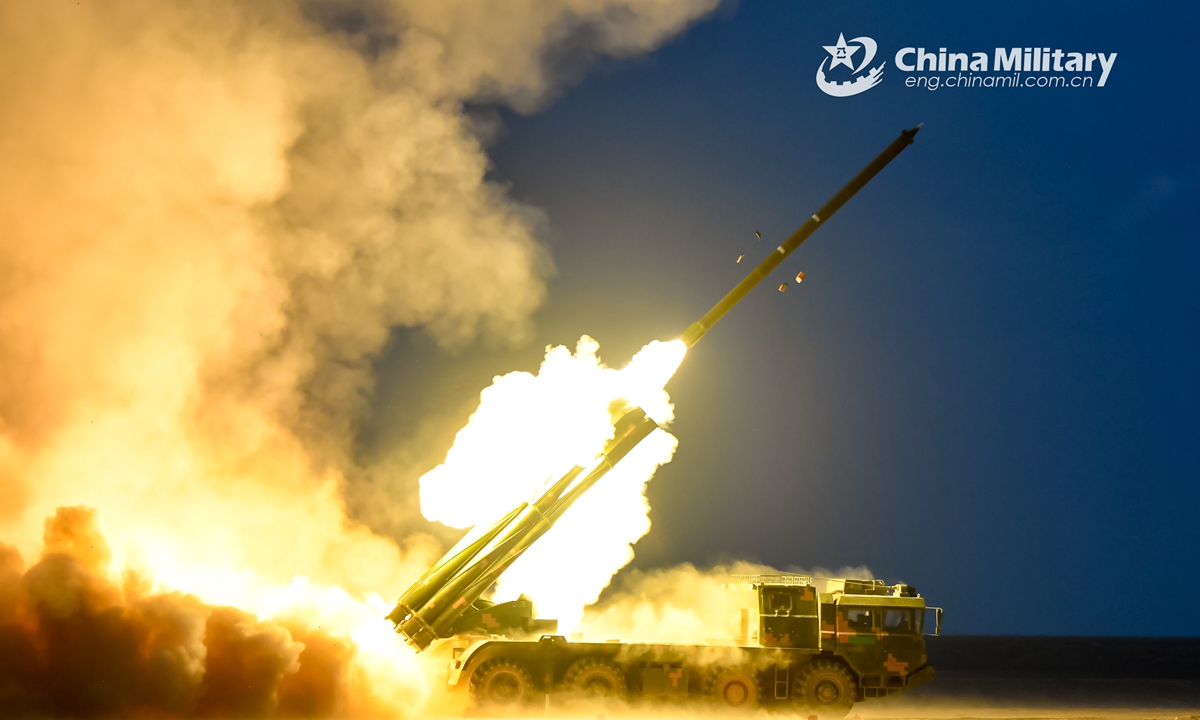
A PHL-03 long-range multiple launch rocket system (LRMLRS) attached to an artillery brigade under the PLA 74th Group Army fires rockets at simulate target during a night raid exercise in an undisclosed desert area of northwest China on July 28, 2021. (eng.chinamil.com.cn/Photo by Huang Hai)
The Chinese People's Liberation Army (PLA) recently conducted a series of tactical drills in the high-altitude plateau region of Southwest China featuring the live-fire shooting of long-range rocket artillery, a type of weapon analysts said on Sunday works particularly well in such terrain and will help the PLA safeguard national sovereignty and territorial integrity.
Having held camp for several months deep in the Zangnan area, the southern part of Southwest China's Xizang Autonomous Region (Tibet), a brigade of the PLA Xizang Military Command recently carried out the exercise at an altitude of 4,600 meters under the harsh cold of -20 C, the China Central Television (CCTV) reported on Friday.
In the drills, multiple types of long-range rocket artillery used multiple types of munitions against multiple types of targets to test their long-range precision strike capabilities under the thin air in winter, CCTV said.
According to the report, a reconnaissance drone took off from a launcher vehicle and guided PHL-03 multiple launch rocket systems to accurately hit mock targets representing air-defense missile launcher vehicles, then the PHL-03s changed positions for the next mission.
This brigade is a main force of long-range artillery affiliated with the PLA Xizang Military Command, and it has been constantly receiving new equipment. The live-fire shooting gathered much new information, which will provide support to the integrated use of new and old equipment, CCTV reported.
"After switching to use new equipment and upgrades to munitions, fire coverage between dozens to more than 100 kilometers can be done with a single system, and it can also realize multi-point precision strikes instead of suppressive fire in a large area," the report quoted Jiang Wei, a battalion commander of the brigade, as saying.
"We can launch attacks as we go, which significantly enhances our fire strike efficiency and survivability," Jiang said.
Unlike many other types of equipment that could suffer from the lack of oxygen at high altitudes, long-range rockets work well in plateau regions as they could gain even longer ranges due to the thin air, a Chinese military expert told the Global Times on Sunday, requesting anonymity.
The live-fire drills will allow the PLA troops to calibrate the weapons under real circumstances, the expert said.
China's long-range rocket artillery technologies are world-leading, and this will help the PLA safeguard national sovereignty and territorial integrity, the expert said.
, PLA border troops were on a routine patrol on the Chinese side of the Line of Actual Control on an eastern section of the China-India border when Indian troops illegally crossed the line and blocked the Chinese forces, forcing the PLA to deal with the situation with professional, standard and powerful measures that stabilized the situation, said Senior Colonel Long Shaohua, a spokesperson of the PLA Western Theater Command, in a statement on Tuesday.
Chinese Foreign Ministry spokesperson Wang Wenbin said during Tuesday's press briefing that the current situation is "generally stable" and asked India to abide by the spirit of relevant agreements signed by the two sides.


